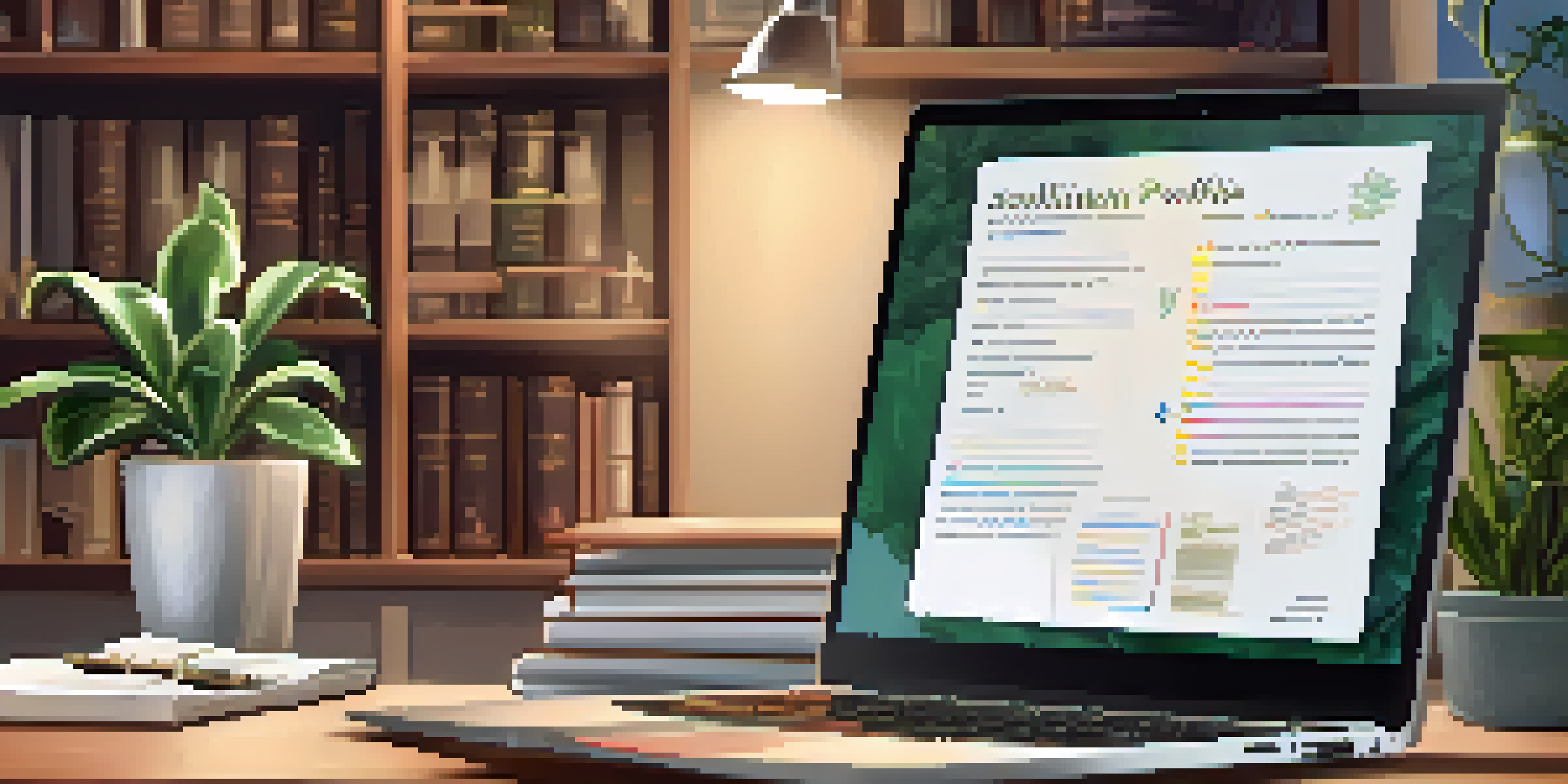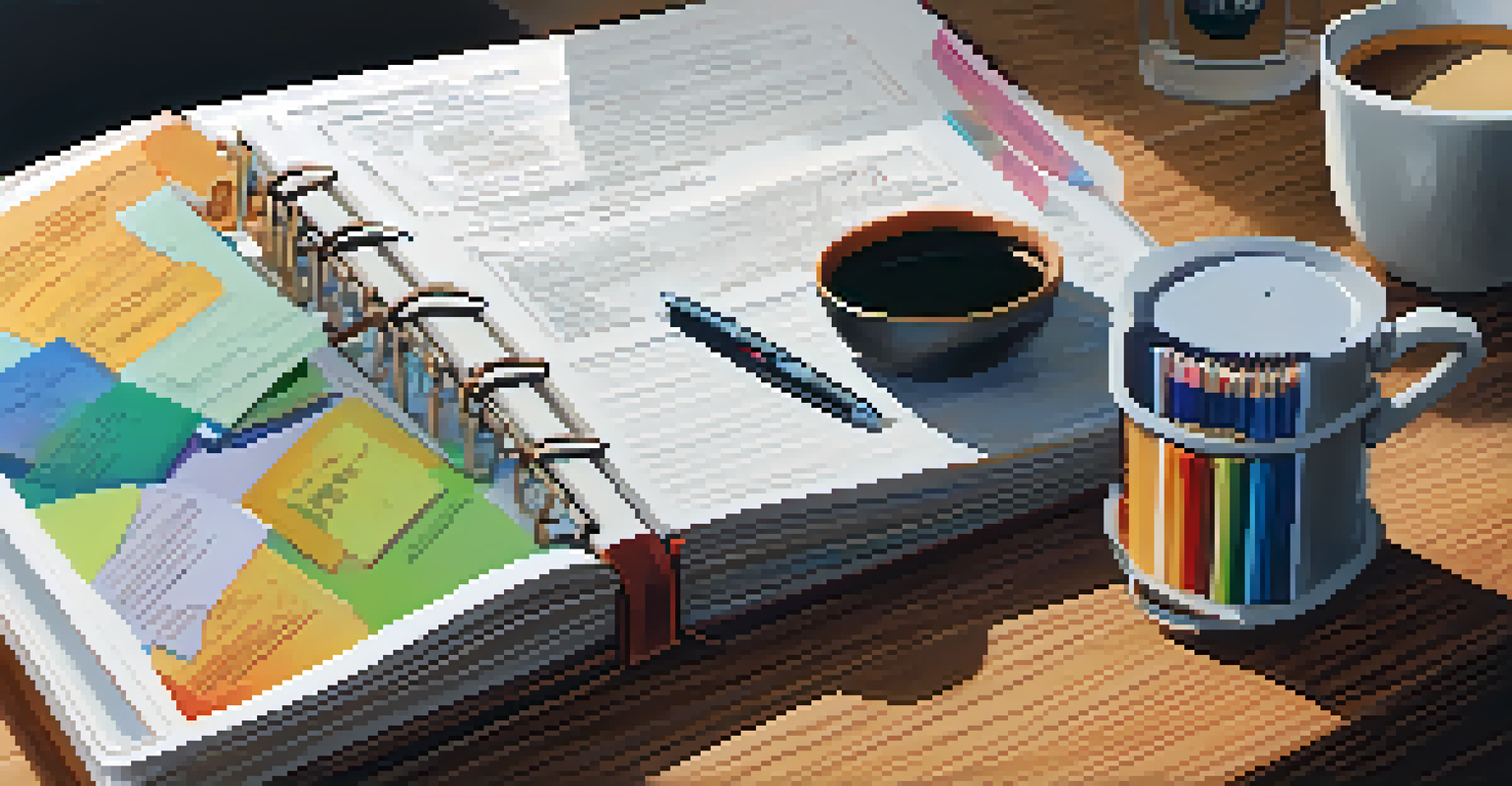How to Create a Life-long Learning Portfolio

Understanding the Purpose of a Learning Portfolio
A life-long learning portfolio is like a scrapbook of your educational journey. It captures your skills, experiences, and achievements over time. The purpose is not just to showcase what you've learned, but to reflect on your growth and set future goals.
Education is the most powerful weapon which you can use to change the world.
Think of it as a personal brand statement that evolves with you. Instead of a static resume, this portfolio can adapt as you gain new skills or experiences. It serves as a powerful tool for self-assessment and professional development.
Ultimately, a well-crafted portfolio can open doors, whether you're seeking new job opportunities or simply aiming to enhance your personal growth. Understanding its purpose is the first step toward building one that truly represents you.
Identifying Key Components of Your Portfolio
When creating your portfolio, think about the key components that showcase your learning journey. This typically includes sections like your educational background, work experience, certifications, and personal projects. Each piece should reflect your unique path.

Incorporating tangible evidence of your learning is crucial. For instance, if you've taken an online course, include your completion certificate or a summary of what you learned. This makes your portfolio not just a collection of words, but a dynamic representation of your skills.
Purpose of a Learning Portfolio
A learning portfolio captures your educational journey, showcasing skills and reflecting on personal growth.
Additionally, consider including reflections on your learning experiences. Writing about what you learned and how it applies to your life can provide deeper insights. These reflections can make your portfolio more relatable and engaging to others.
Choosing the Right Format for Your Portfolio
The format of your learning portfolio can significantly affect its presentation. You might choose a digital format, like a website or a PDF, which allows for easy sharing and updates. Alternatively, a physical binder can give a more personal touch, especially for in-person interviews.
The beautiful thing about learning is that no one can take it away from you.
If you opt for a digital format, consider platforms like LinkedIn, WordPress, or dedicated portfolio sites. These platforms often come with templates that make it easy to organize your content visually. Choose one that feels intuitive for you.
Regardless of the format, ensure it's user-friendly and visually appealing. A cluttered and complicated layout can distract from your achievements. Keep it clean and straightforward so your skills shine through.
Collecting Evidence of Your Learning Experiences
To effectively showcase your skills, start collecting evidence of your learning experiences. This can include certificates from courses, feedback from projects, or even blog posts you've written on relevant topics. Each piece of evidence adds credibility to your portfolio.
Think about varied sources of evidence—both formal and informal. For example, if you volunteered for a community project, document your role and the skills you developed. These diverse experiences illustrate your adaptability and commitment to learning.
Key Components to Include
Include sections like educational background, work experience, and reflections to effectively demonstrate your learning journey.
Remember to keep your evidence organized as you go. Create folders on your computer or in a physical binder to store these materials. This way, when it’s time to update your portfolio, you’ll have everything ready to go.
Reflecting on Your Learning Journey
Reflection is a key aspect of creating a meaningful learning portfolio. Take the time to think about what you've learned and how it has shaped you. This can be as simple as journaling your thoughts after completing a course or project.
In your portfolio, include a reflection section where you analyze key experiences. Discuss challenges you faced, how you overcame them, and what you learned in the process. This not only adds depth to your portfolio but also helps you internalize your experiences.
Moreover, reflecting on your learning journey can guide your future goals. By understanding your past, you can better plan for the skills you want to acquire next. This creates a continuous cycle of learning and growth.
Updating Your Portfolio Regularly
Your life-long learning portfolio is a dynamic tool that should evolve with you. It’s essential to update it regularly to reflect new skills, experiences, and achievements. This could be as simple as setting a reminder to review it every few months.
When you complete a new course or project, add it to your portfolio immediately. This keeps your portfolio fresh and relevant, showcasing your commitment to continuous learning. Regular updates also make it easier to prepare for job applications or interviews.
Importance of Regular Updates
Regularly updating your portfolio keeps it relevant and highlights your continuous learning and development.
Additionally, don’t hesitate to remove outdated information. If a skill or experience no longer represents you, it’s okay to let it go. This keeps your portfolio focused on what truly matters and highlights your current capabilities.
Sharing Your Portfolio with Others
Once your learning portfolio is ready, it’s time to share it! Whether you're networking, applying for jobs, or seeking mentorship, a well-crafted portfolio can make a strong impression. Consider sharing it through professional platforms like LinkedIn or personal websites.
You can also share your portfolio during informational interviews or networking events. Having a tangible document to discuss can set you apart from others. It shows initiative and a commitment to your professional development.

Don’t underestimate the power of feedback. Share your portfolio with trusted colleagues or mentors and ask for their thoughts. Constructive criticism can help you refine your portfolio and make it even more impactful.